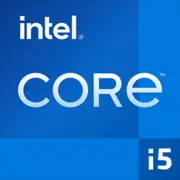Intel Core i5-13500T

Intel Core i5-13500T: Hybrid Power for Efficient Systems
March 2025
Introduction
Intel Core i5 processors have always balanced performance and price, but the i5-13500T stands out even among its peers. Designed for energy-efficient systems, it features hybrid Raptor Lake architecture with a low TDP of 35W. In this article, we'll explore who this CPU is suitable for, how to build a PC based on it, and what advantages it offers over competitors.
1. Main Specifications: Architecture and Performance
Raptor Lake Architecture
The i5-13500T is built on the hybrid Raptor Lake architecture (Intel 7, 10nm Enhanced SuperFin). Inside, it houses 6 Performance cores (P-cores) with Hyper-Threading (12 threads) and 8 Efficient cores (E-cores), totaling 14 cores and 20 threads. P-cores handle heavy tasks while E-cores manage background processes, reducing power consumption.
Cache and Clock Frequencies
Base frequency is 1.8 GHz, with a maximum in Turbo Boost of 4.6 GHz. The L3 cache size is 24MB, which speeds up data handling in multi-threaded scenarios (rendering, encoding).
Integrated Graphics
Intel UHD Graphics 770 supports 4K@60Hz, AV1 decoding, and HDMI 2.1. This is ideal for media centers or office PCs without a discrete graphics card. In low settings games: CS:GO — 60-70 FPS, Fortnite — 35-45 FPS.
Performance in Benchmarks
- Geekbench 6: Single-Core — 2235, Multi-Core — 9900.
- Cinebench R23: Multi-Core — 14500 points.
For comparison, the i5-12500T (previous generation) shows 12% lower performance in Multi-Core tests.
2. Compatible Motherboards: Socket and Chipsets
LGA 1700: Universal Socket
The processor uses the LGA 1700 socket, compatible with 600 and 700 series chipsets:
- B760/H770: The optimal choice. Supports DDR4/DDR5, PCIe 5.0, USB 3.2 Gen 2x2.
- Z790: Excessive since the i5-13500T doesn’t support overclocking.
- H610: Budget option, but limited to PCIe 4.0 and fewer USB ports.
Example Boards:
- MSI Pro B760M-A WiFi ($150): 2 M.2 slots, Wi-Fi 6, DDR5 support.
- ASUS TUF Gaming H770-Pro ($180): Robust VRM zone, 2.5G LAN.
Tip: For compact builds, choose Mini-ITX boards (e.g., ASRock B760M-ITX), but consider the limited expansion slots.
3. Supported Memory: DDR4 vs DDR5
Flexibility in Choice
The i5-13500T works with DDR4-3200 and DDR5-4800. The price and performance difference:
- DDR4-3200 (32GB, CL16): $75. Suitable for office tasks and gaming with a discrete GPU.
- DDR5-4800 (32GB, CL40): $110. Offers a boost in rendering (+15% in Blender) and handling large data sets.
Recommendation: If budget is tight — go for DDR4. For future upgrades — choose DDR5 (some games are already benefiting from high bandwidth).
4. Power Supply: Power Calculation
Power Consumption and Requirements
With a TDP of 35W, peak power can reach 90W. Recommendations:
- Without a discrete graphics card: 300–400W (e.g., be quiet! Pure Power 11 400W, $65).
- With a GPU like RTX 4060: 550–650W (Corsair RM650x, $100).
Important: Choose power supplies with an 80 Plus Bronze certification or higher. For mini-PCs, SFX models are recommended (Cooler Master V550 SFX, $120).
5. Pros and Cons of i5-13500T
Advantages
- Energy efficiency: Ideal for mini-PCs and systems with passive cooling.
- Multi-threading: 20 threads handle 4K editing in DaVinci Resolve smoothly.
- Support for PCIe 5.0: Future-proof for upcoming SSDs and graphics cards.
Disadvantages
- No overclocking: Maximum frequency is fixed.
- Price: $250 (as of March 2025), which is $20 more expensive than AMD Ryzen 5 7600.
6. Use Cases
Gaming
With RTX 4060 at Full HD:
- Cyberpunk 2077: 60 FPS (medium settings, DLSS).
- Hogwarts Legacy: 55–65 FPS.
Tip: For gaming above Full HD, consider adding a discrete GPU.
Work Tasks
- Video editing: Rendering a 10-minute 4K video in Premiere Pro takes 8 minutes.
- Programming: Quick code compilation in Visual Studio.
Multimedia
4K streaming, graphics work in Photoshop.
7. Comparison with Competitors
AMD Ryzen 5 7600
- Price: $230.
- 6 cores/12 threads, TDP 65W.
- Better in single-threaded tasks (Geekbench 6 Single-Core: 2450), but lags in multi-threaded scenarios.
Intel Core i5-13400F
- Price: $220.
- No E-cores (10 cores/16 threads), TDP 65W.
- Less efficient in multitasking.
Conclusion: The i5-13500T outperforms its competitors in scenarios where energy efficiency and multi-threading are crucial.
8. Practical Tips for Building
Cooling
Even with a TDP of 35W, use a tower cooler (DeepCool AK400, $35) to reduce noise.
Case
For mini-PC: Fractal Design Ridge (supports GPU lengths up to 335mm).
Storage
- PCIe 5.0 SSD (e.g., Kingston Fury Renegade, 1TB, $150) for professional tasks.
- Budget option: PCIe 4.0 NVMe (WD Blue SN580, $80).
9. Final Conclusion: Who is the i5-13500T For?
This processor is the choice for those who value:
- Silence and compactness: Small PCs, home servers.
- Versatility: Photo/video processing, streaming, office work.
- Future upgrades: Support for DDR5 and PCIe 5.0.
If you don't need extreme FPS in games or overclocking, the i5-13500T will serve as a reliable foundation for a system for years to come.
Prices are up to date as of March 2025.
Basic
CPU Specifications
Memory Specifications
GPU Specifications
Miscellaneous
Benchmarks
Compared to Other CPU
Share in social media
Or Link To Us
<a href="https://cputronic.com/index.php/cpu/intel-core-i5-13500t" target="_blank">Intel Core i5-13500T</a>